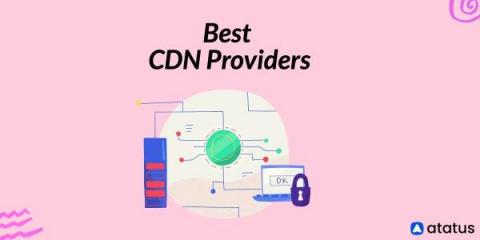Operations | Monitoring | ITSM | DevOps | Cloud
CDN
CDN Provider Performance Monitoring: Best CDNs in Japan
This blog continues our best CDN series. Today we will be analyzing CDN performance and uptime in Japan over the last seven and 30 days. Tip: Are you new to CDNs? Visit our What is a CDN resource to learn more.
CDN Provider Performance Monitoring: Best CDNs in the UK
This blog continues our best CDN series. Today we will be analyzing content delivery network performance and uptime in the United Kingdom over the last seven and 30 days. Tip: Are you new to CDNs? Visit our What is a CDN resource to learn more.
CDN Provider Performance Monitoring: Best CDNs in India
This blog continues our best CDN series. Today we will be analyzing CDN performance and uptime in India over the last seven and 30 days. Tip: Are you new to CDNs? Visit our What is a CDN resource to learn more.
What is a Content Delivery Network? (CDN)
As the demand for media-rich content grows, so do the performance expectations of consumers. One of the greatest challenges online businesses face is to deliver large amounts of content to audiences spread out across the globe as quickly as possible. The solution is a content delivery network (CDN).
CDN Provider Performance Monitoring: Best CDNs in Russia
In this blog, we’ll be continuing our series on best-performing CDNs by country. Today’s focus is on Russia. This analysis compares CDN performance and RUM uptime metrics grouped by data sources within the last seven and 30 days of this writing. First things first.
What is a Content Delivery Network (CDN)?
As the demand for media-rich content grows, so do the performance expectations of consumers. One of the greatest challenges online businesses face is to deliver large amounts of content to audiences spread out across the globe as quickly as possible. The solution is a content delivery network (CDN).
7 Best CDN Providers 2022
Web page loading time, or website speed in a more technical phrase, is an important SEO component. It's also the most important aspect of the user experience. Modern internet content consumers have a short attention span and lack patience. You risk losing valuable traffic if your website does not load quickly enough. A CDN (Content Delivery Network) can help a website load faster.
Monitor CDN performance within your Synthetic tests
Content delivery networks (CDNs) reduce latency by delivering cached data (e.g., JavaScript files, stylesheets, images, and videos) from a network of linked proxy servers to end users around the globe. CDNs help reduce the load on your origin servers and shorten the distance that data needs to travel, thus improving the end-user experience.
What are CDN Logs and Why Do They Matter
Content Delivery Network produces numerous log files called CDN logs to deliver video across the internet to our homes and mobile devices. These logs contain crucial information about the CDN servers' performance and video streaming quality. Also, it contains terabytes of data, which has its own set of hurdles in terms of handling it in real-time and performing analytics to understand user experience and network concerns.











